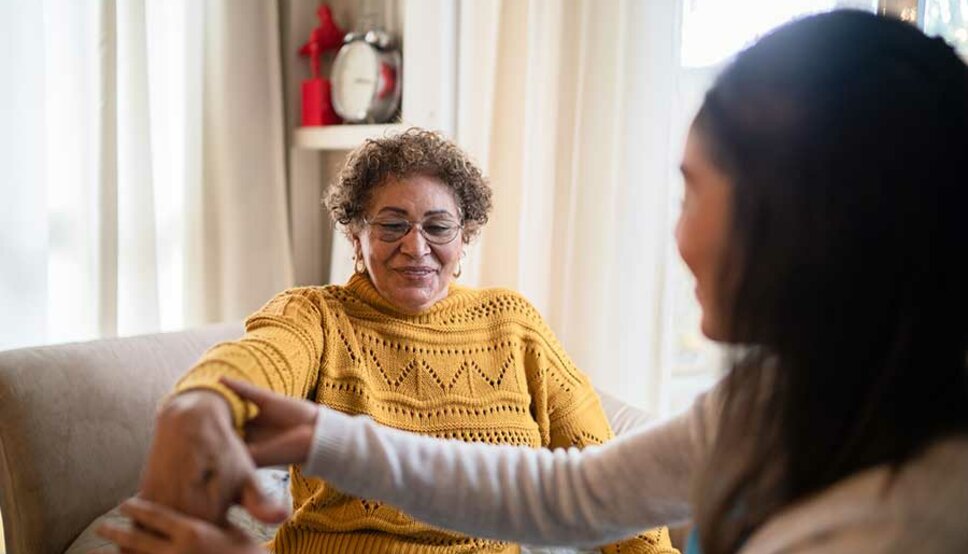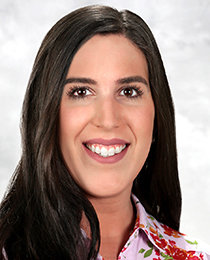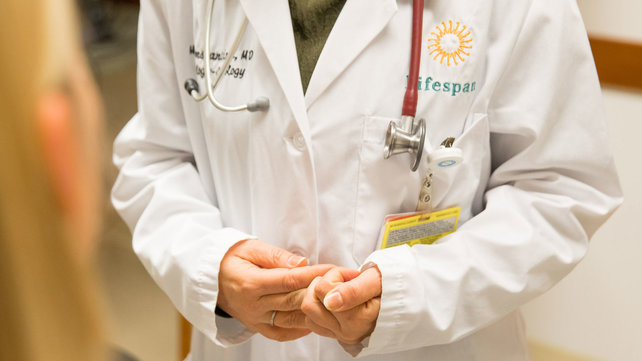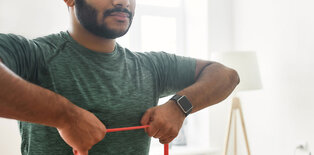Stroke Recovery and the Role of Rehabilitation

Each year, nearly 800,000 people suffer a stroke in the United States. When it comes to treating an individual with a stroke, the principle “time is brain” is crucial. The sooner a stroke is recognized and treated, the better the chances for a positive outcome.
How a stroke affects the body
Patients who have had a stroke may have varying needs, depending on where it occurred in the brain and the type of stroke that occurred (ischemic or hemorrhagic). The effects of a stroke can differ widely from patient to patient, and individuals may experience a range of symptoms, including:
- facial droop
- weakness of arm and/or leg
- numbness and/or tingling sensations
- spasticity (constant muscle contractions)
- muscle contracture (shortening of muscle)
- neglect on one side of the body
- difficulty speaking and/or swallowing
- impaired vision
- depression
- difficulty with problem solving and/or memory
Rehabilitation for stroke recovery
It is truly a team of medical professionals who help stroke patients recover. Rehabilitation services is an integral part of that multidisciplinary team, including physiatrists (specialists in physical medicine and rehabilitation), licensed therapists, and many health care providers who work with the patient’s physician to ensure the best treatment plan for each individual’s unique needs.
Types of rehabilitation
Following a stroke, many patients will need some rehabilitation to support their recovery. Based on their individual needs, rehabilitation services may include physical therapy, occupational therapy, and/or speech-language pathology. We are there every step of the way.
Physical therapy
Physical therapists (PTs) focus on improving walking, strength, mobility, range of motion, and overall function to enhance endurance and promote independence as patients return to their home and community. PTs tailor therapy to help individuals regain the physical abilities needed for everyday activities. PTs may focus on a variety of activities, including:
- transferring in and out of bed, chairs, or cars
- improving walking through the use of assistive devices and the cutting edge technology, such as wearable exoskeletons, virtual reality walking platforms, and interactive touch screen therapy, which can help to improve endurance and stability
- re-building strength and endurance, as patients may experience a loss in function
- managing spasticity, increasing active range of motion, and preventing muscle contractures
Occupational therapy
Depending on the presentation or type of stroke, patients may need help to perform daily functions due to weakness, neglect, spasticity, and/or impaired cognition. When everyday activities that are vital for function and quality of life are impacted by a stroke, it threatens an individual’s independence.
Occupational therapists (OTs) provide care both in the hospital and at outpatient locations, with a primary focus on helping patients regain their ability to function in daily life. OTs play a key role in bridging the gap back to the community, working closely with each patient to assess their specific needs—whether it's returning to work, pursuing hobbies, or re-engaging in activities they enjoyed prior to their stroke. The goal of the OTs is to empower patients to regain independence and return to the activities that bring them joy and fulfillment.
To reduce the impact of a stroke on daily living, OTs focus on daily activities, which may include:
- personal hygiene, such as dressing, bathing, or brushing teeth
- toileting
- cooking or eating
- driving
- home management
- memory
Speech-language pathology
Speech-Language Pathologists (SLPs) are a vital service across all levels of care. After a stroke, patients may have difficulty swallowing liquids or solids. An SLP works with patients to ensure tolerance of the least restrictive diet without aspirating (food or liquid going down the wrong way).
SLPs work with medical imaging to perform a procedure called a modified barium swallow. This study shows structural or functional changes related to swallowing. If changes are noted, SLPs may make recommendations to change the consistency of food or liquids to make eating safer and easier. Additionally, they can establish an exercise program to help re-strengthen swallowing muscles. The team at Newport Hospital also offers Synchrony, a dedicated biofeedback system for treating dysphagia and swallowing disorders.
Additionally, SLPs also assess and treat speech, language, and cognitive issues. Strategies for improving communication in patients who experience difficulties in speech production or language expression may include: use of picture cards, a communication book, or tablet. The use of alternative forms of communication tools can help a patient engage in conversation more freely. Losing the ability to communicate can be extremely difficult. SLPs give hope, and motivate patients and caregivers, with a focus on getting our patients back to the best quality of life possible .
Physiatry
Physiatry is an area of medicine focused on the prevention, diagnosis and treatment of disorders related to the nerves, muscles, bones, and brain. As physician leaders of rehabilitation, physiatrists guide patients through the recovery process after a stroke, from acute hospitalization to inpatient or subacute rehabilitation and, eventually, to outpatient care. Navigating the health care system after a stroke can be challenging. Physiatrists help patients get the care they need with a focus on the patient’s independence, safety and recovery at the center of all decisions.
Stages of rehabilitation
Brown University Health’s Rehabilitation Services offers care for stroke patients in our Vanderbilt Rehabilitation Center at Newport Hospital, and at our many outpatient locations.
Inpatient rehabilitation
Rehabilitation often begins in the hospital immediately following a stroke. Our inpatient rehabilitation center helps patients return to their lives, safely and sooner. Thanks to our team of experts, combined with a full suite of the latest in innovative rehabilitation technology unsurpassed in the region, our patients have a positive experience and a quicker recovery.
During inpatient rehabilitation, we look at the whole person and determine what their needs may be–from orthotics to walkers to wheelchairs or to modified diets and communication aids. We are also actively involved in the discharge process, working to ensure that patients are placed in the most appropriate setting to receive the optimal care and services for the next phase of their recovery.
Outpatient rehabilitation
For many individuals, an essential part of stroke recovery occurs after leaving the hospital, as they resume their daily activities, such as work, hobbies, and family life. Outpatient physical therapy plays a key role during this phase, helping patients regain strength, mobility and independence.
Outpatient therapy is tailored to each patient's unique needs and goals, with a focus on improving physical abilities and preventing setbacks. Our therapists work closely with patients to address any lingering issues—whether it's balance, coordination, or endurance—ensuring they continue to make progress.
Throughout the rehabilitation journey, the goal of our team is to ensure each patient receives the right services at the right time, creating a seamless path from hospital care to home recovery. Our commitment is to helping patients achieve the highest possible quality of life by empowering them to regain independence and continue thriving in their daily routines.
Learn more about Brown University Health Rehabilitation Services and Stroke Services on our website.

About the Author:
Nicole Rawnsley, PT, DPT, NCS
Nicole Rawnsley, DPT, NCS, is a clinical specialist physical therapist on the neurology team with Brown University Health adult outpatient rehabilitation services. She is a board-certified neurological clinical specialist specializing in stroke rehabilitation, Parkinson's disease and movement disorders.
Find a Doctor

The right provider is in our network
Search more than 1,200 providers in our network.



